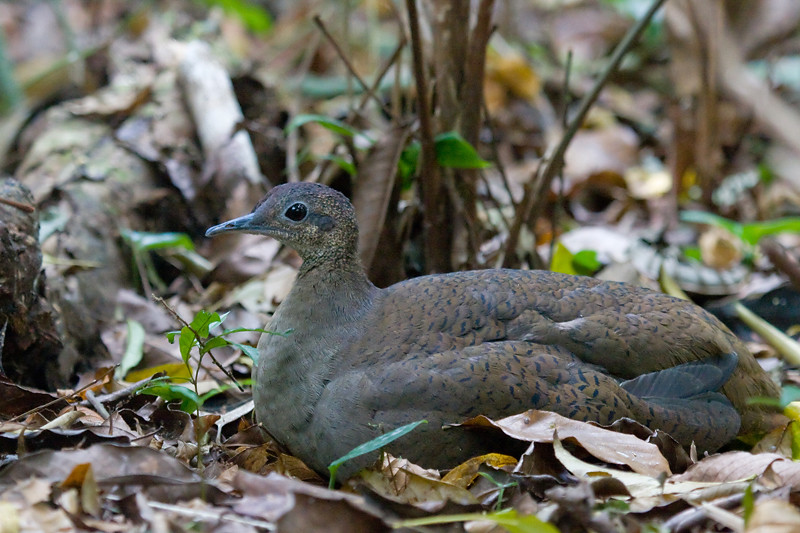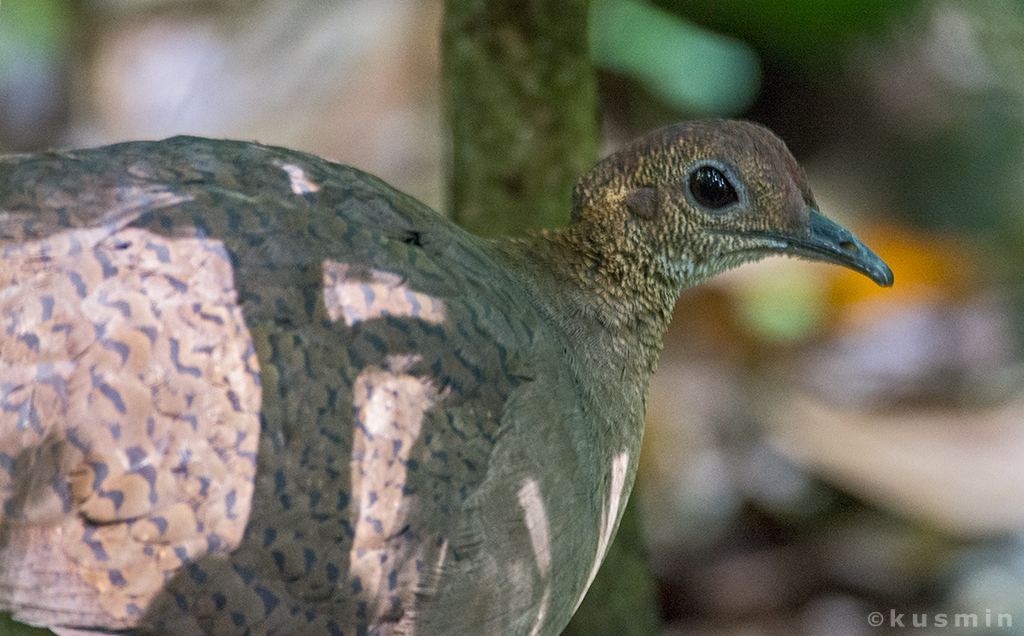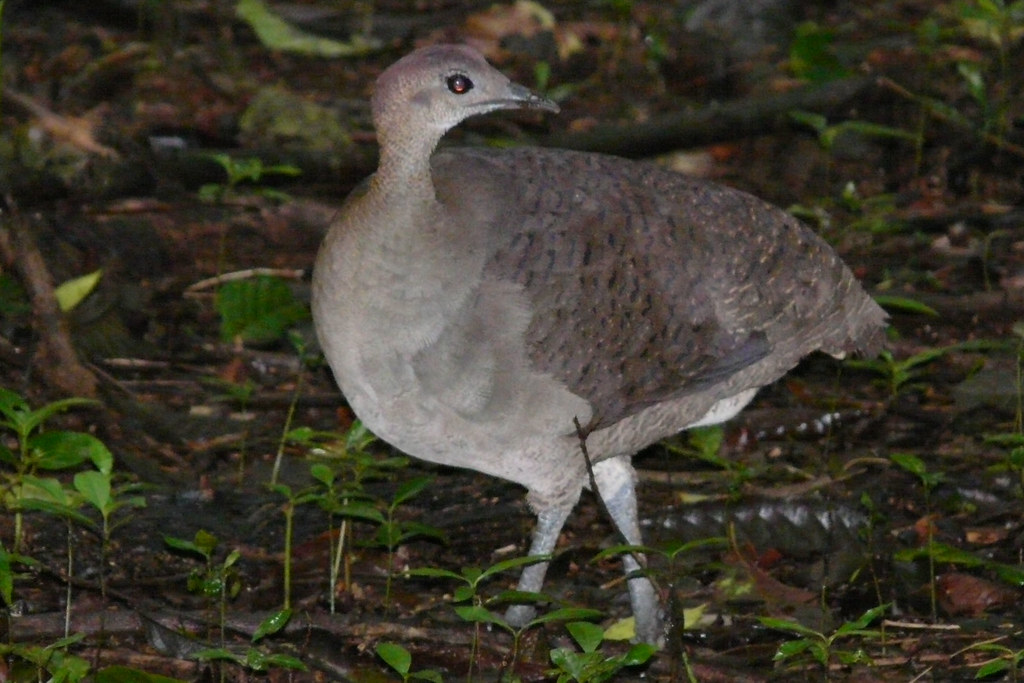Tinamus major Gallina de Monte
Identification: 18" (46cm). 1.1kg. Large and brownish. Eyes large and dark brown; legs dark gray to dark bluish gray. Crown and short bushy crest on rearcrown dark rufous brown, throat white, sides of head and foreneck cinnamon rufous flecked buff (imparts a blond or pale look to head); head and neck otherwise unmarked; rest of upperparts brown varying from virtually unbarred to occas. rather heavily barred dusky; chest grayish brown, rest of underparts buff (light to dark), flanks and thighs with variable amt. of blackish barring; under tail coverts cinnamon rufous mottled dusky. Or sides of head and neck brighter rufous (zuliensis). Imm.: sim. but above unmarked, below with a few buff spots.
Sim. species: Larger than other lowland tinamous. Plumage variable but always brownish to buffy brown, usually with no markings on neck and little or no barring above. In foothills and mts. see Gray and Highland tinamous; in Amazonas cf. smaller White-throated Tinamou.
Voice: Song variable but always loud, very rich, and resonant (cf. Little Tinamou); typically 1-2 short tremulous whistles, then a longer one that rises slightly, then falls, the whole phrase repeated once or up to 6 times, e.g., wuu, wuu wooouuuuuuuooo, wuuu wuuuuuuuoo, wuuu wooouuuuuuuooo, etc., or a ser. of long tremulous whistles, each fractionally higher than the preceding. Song seems to grow louder and more tremulous and urgent as it continues. Most often hd. at dusk, the hauntingly beautiful song is one of the most memorable of lowland rainforest. Caution: Almost all song patterns are closely duplicated by Little Tinamou, but Little’s songs are weaker, flatter, and lack full-bodied resonance. Behavior: A shy, terrestrial, and solitary bird, usually encountered accidentally. Avoids detection by quietly walking away, but if surprised may rise with a roar, a whistling sound, and a rush of wings, accelerating away, sometimes noisily crashing into vegetation before landing a short distance away. Wary when hunted, but where unmolested may become habituated to humans. Roosts on branch or vine above gd. Nest a leafy depression on gd. between tree buttresses; up to 7 large, porcelainlike, turquoise eggs.
Status and habitat: Fairly common resident (by voice) in humid lowland and lower montane forest. Generally characteristic of mature, relatively undisturbed forest. Now rare and local where hunted for food.
Range: To ca. 200m n of Orinoco; to 1500m s of Orinoco. E base of Sierra de Perija (Rfos Aricuaisa, Negro, and Catatumbo), Zulia, e to w base of Andes in Merida; e base of Andes; n cordilleras from Tucu-cas, Falcon to Cerro Negro, se Miranda; ne Monagas (Caripito); generally in Amazonas; nw Bolivar e to lower and mid. Rfo Caura at Salta Para (zuliensis); Delta Amacuro and rest of Bolivar (major). Se Mexico to n Bolivia, Amaz. Brazil, and the Guianas.
Source: Birds Venezuela Steven L. Hilty



No hay comentarios.:
Publicar un comentario